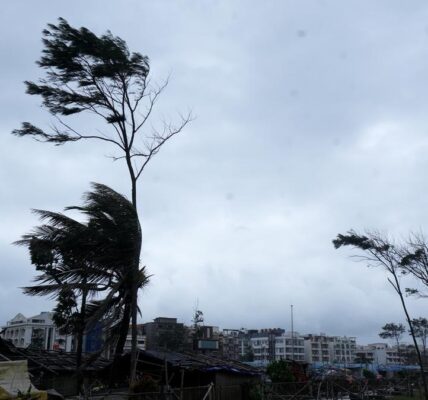Govt. Announces 5 New Districts in Ladakh: Zanskar, Drass, Sham, Nubra, and Changthang
In a significant move aimed at boosting the development and administrative efficiency in the Union Territory of Ladakh, the Government of India has announced the creation of five new districts: Zanskar, Drass, Sham, Nubra, and Changthang. This decision is seen as a major step toward addressing the unique developmental needs of Ladakh, a region that has long required specialized attention due to its geographical, cultural, and strategic importance.

Why Create New Districts in Ladakh?
The creation of these new districts is aimed at achieving several key objectives:
- Improving Administrative Efficiency: The vast and diverse terrain of Ladakh presents unique challenges for governance. By carving out five new districts, the government aims to bring administration closer to the people, ensuring better delivery of public services and governance.
- Focused Development: Each of the new districts—Zanskar, Drass, Sham, Nubra, and Changthang—has its own distinct needs and developmental challenges. By establishing smaller administrative units, the government can better focus on the specific needs of these areas, from infrastructure development to healthcare and education.
- Boosting Local Economy: The new districts are expected to receive focused developmental plans tailored to their unique economic strengths. For instance, Nubra’s tourism potential, Zanskar’s adventure tourism appeal, and Changthang’s traditional industries can be harnessed more effectively under a localized administration.
- Enhancing Security and Strategic Management: Ladakh’s strategic location along the northern borders of India makes it crucial from a defense standpoint. The new districts will facilitate better coordination between civilian administration and defense forces, enhancing overall security management in the region.
Timing of the Announcement: A Political Strategy?
The timing of the announcement has raised eyebrows and sparked discussions, particularly because it comes just as elections are nearing in Ladakh. Several political analysts suggest that this move could be a strategic attempt by the government to garner support from the local population. By addressing long-standing demands for better governance and infrastructure, the government appears to be positioning itself favorably ahead of the electoral battle.
- Addressing Local Aspirations: The demand for better administrative divisions has been a long-standing one in Ladakh. By fulfilling this demand, the government could potentially win the favor of the local populace, who have been advocating for more attention and resources from the central government.
- Election Readiness: With elections approaching, creating new districts could be seen as a way to show the government’s commitment to the development of Ladakh, thereby influencing voter sentiment. It is a message that the government is serious about addressing the region’s unique challenges and promoting its growth.
- Boosting Local Representation: New districts could also mean a reorganization or increase in local administrative bodies, potentially giving more political representation and voice to smaller communities. This can help align political agendas with local needs and demands, further strengthening political ties between the government and the local people.
Challenges and the Road Ahead
While the creation of new districts promises many benefits, there are also challenges to be considered:
- Resource Allocation: Ensuring that each new district receives adequate resources—both financial and human—will be crucial. Effective governance will depend on how quickly and efficiently the infrastructure for these new administrative units is established.
- Integration with Existing Structures: The integration of these new districts into the existing administrative framework of Ladakh needs to be smooth to avoid any disruptions in governance and public services.
- Managing Local Sentiments: While many are welcoming the move, some may have reservations about the real motives behind the decision. Addressing these concerns transparently will be important to ensure sustained support from the local population.




